Maharashtra celebrates the birthday of the elephant-headed God with fervour and grandeur. Amid the pomp and show, we walked around the ‘manache pandals’ in Pune, drove to the Ganapatipule temple on the konkan coast and savoured puranpolis in the quaint village of Pawas in Ratnagiri
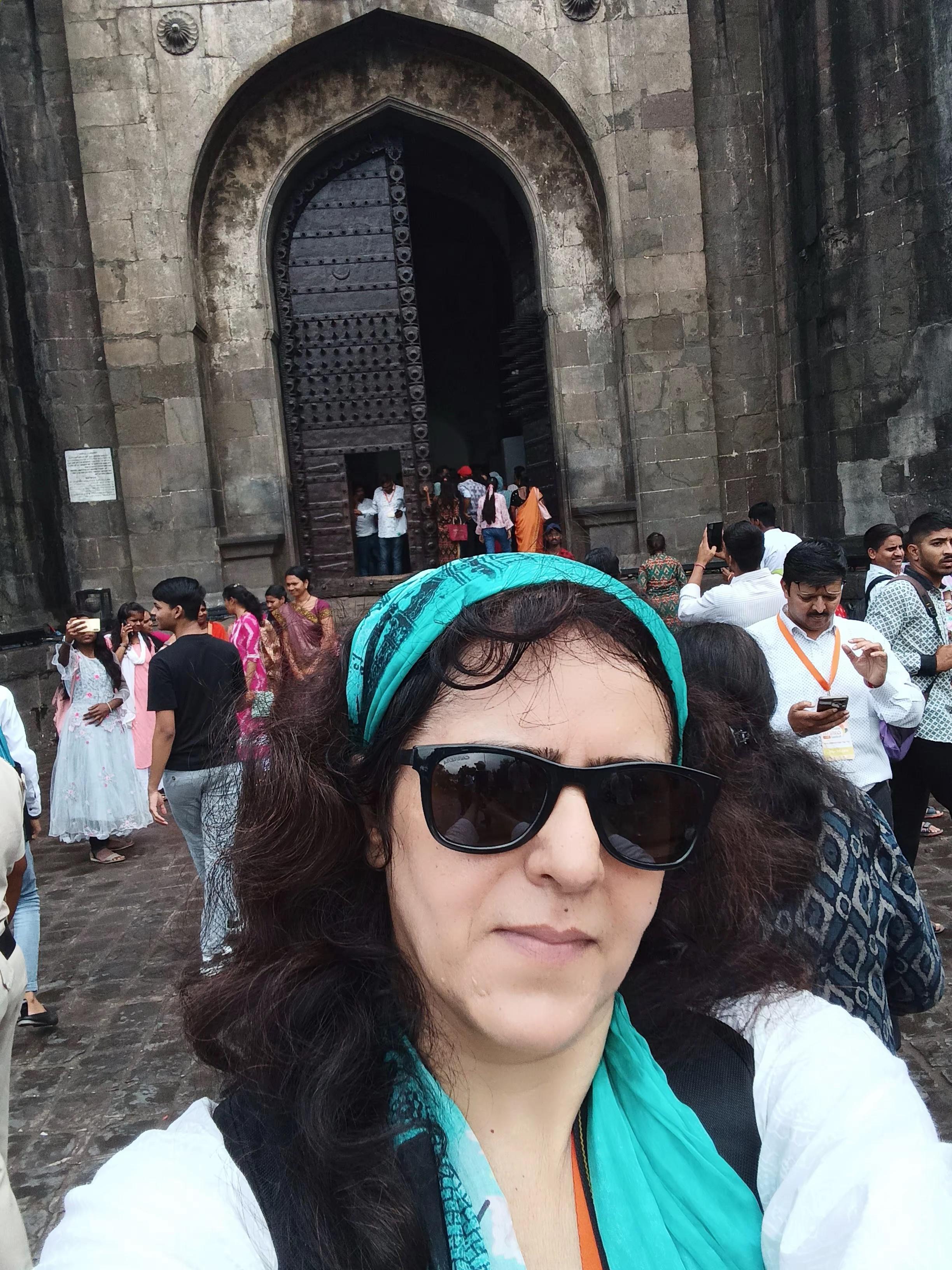
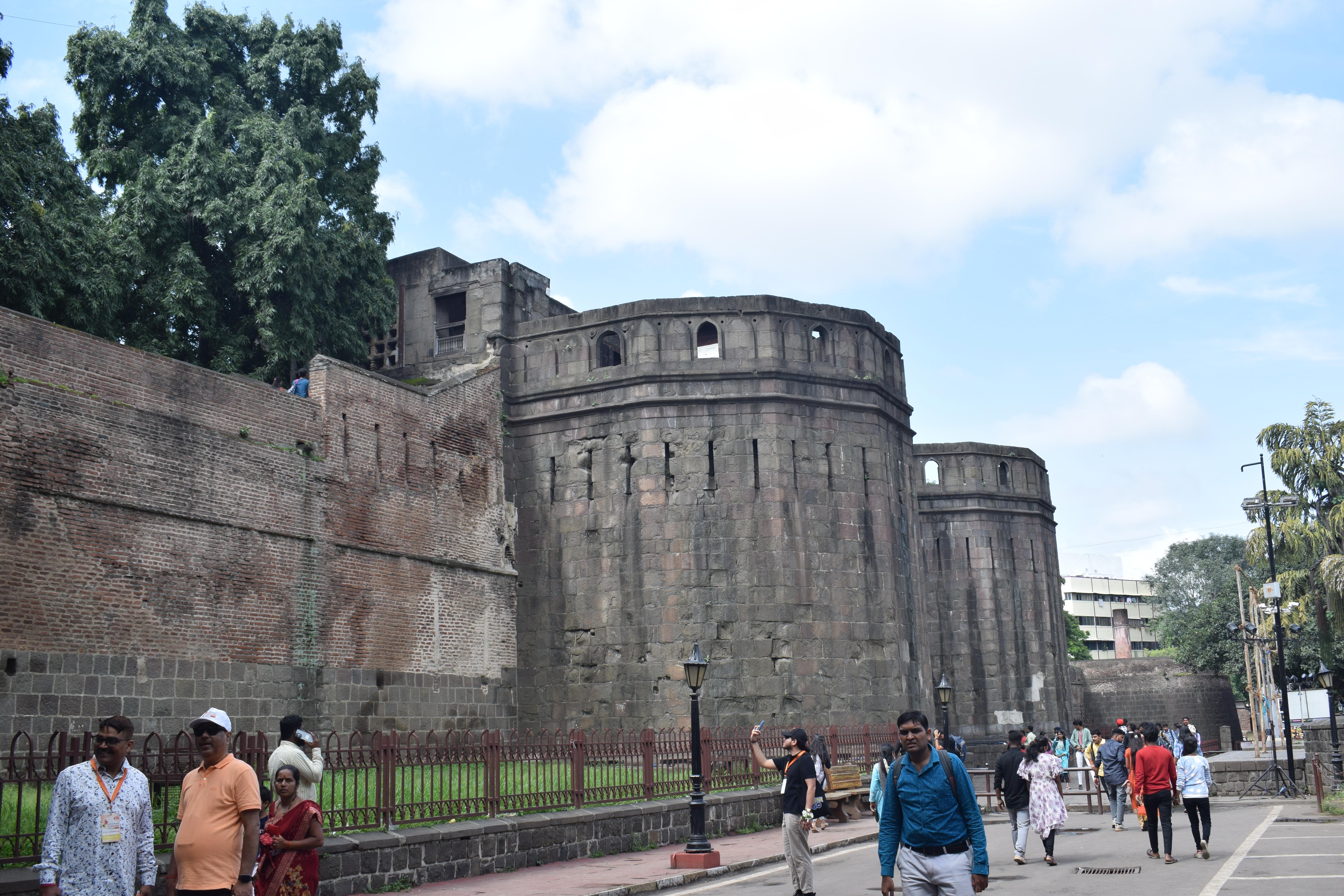
Here, I was, standing in front of the 291-year-old Shaniwar Wada, the impenetrable residence of the Peshwas, glorified in the movie Bajirao Mastani (2015). I half expected to see the grand Ganesha aarti of yesteryears, the beautifully adorned women and brave warriors. I wondered what stories these dark-stoned thick walls would narrate about the festivities.
This was Kasba Peth, among the oldest and most historically significant areas in Pune. Established by Jijabai Bhonsle, mother of the legendary Maratha ruler, Chhatrapati Shivaji Maharaja, it was the epicentre of political and cultural activities during the 17th century.
A confluence of heritage buildings, temples, and a bustling market, it also houses the Kasba Ganapati temple, established by Jijabai in 1639. The epicentre of Ganesh Chaturthi celebrations, the Ganesha idol in this temple is the presiding deity or gram devata of Pune. It receives the first honours during the visarjan (immersion) that marks the end of the 10-day celebrations.
Besides being the cultural capital of Maharashtra, Pune is also known as the city of Ganesha.
Beginning of Ganesha Chaturthi Festival
Hailed as the remover of obstacles and the god of new beginnings, Ganapati or the leader of Shiva’s ganas/demons/people is seated on a mouse, eating modaks, loving ladoos. Mentioned in the Rig Veda, he is also the guardian of wisdom, intelligence, happiness, success, scribes and bankers.
History dates the public celebrations to the times of the 17th century Maratha-ruler Chhatrapati Shivaji Maharaja.
However, under the British Raj, the public celebrations fizzled out, limited to homes of upper caste Hindus and Brahmins. It was the mathematics teacher, journalist, lawyer and freedom fighter, Lokmanya Bal Gangadhar Tilak, who popularised the Sarvajanik Ganesha Utsav in 1893.
Some historians say that Tilak was inspired by the celebration held by Bhausaheb Rangari, the royal Ayurvedacharya, at Budhwar Peth in 1892. Bhausaheb Rangari prepared a special chariot and idol in which Ganesha is killing a demon, signifying the British regime. This can be viewed even today.
Tilak saw this festival as a way to unite people for the common cause of rising against the British rule, irrespective of caste and creed. Defying the British government’s 1892 legislation of anti-public assemblies, he organised celebrations in 1893 at Vinchurkar Wada. Simultaneously, two of his followers answered the clarion call and started the festivities at Keshavi Naik Chawl Sarvajanik Ganeshotsav Mandal at Girgaum, Mumbai. This was among the most significant steps in the fight for ‘swaraj’.
Tilak has been hailed as ‘The Father of Indian Unrest’, ‘The Maker of Modern India’, ‘The Father of the Indian Revolution’. He lived the first 10 years of his childhood in Ratnagiri before his father found work in Pune.
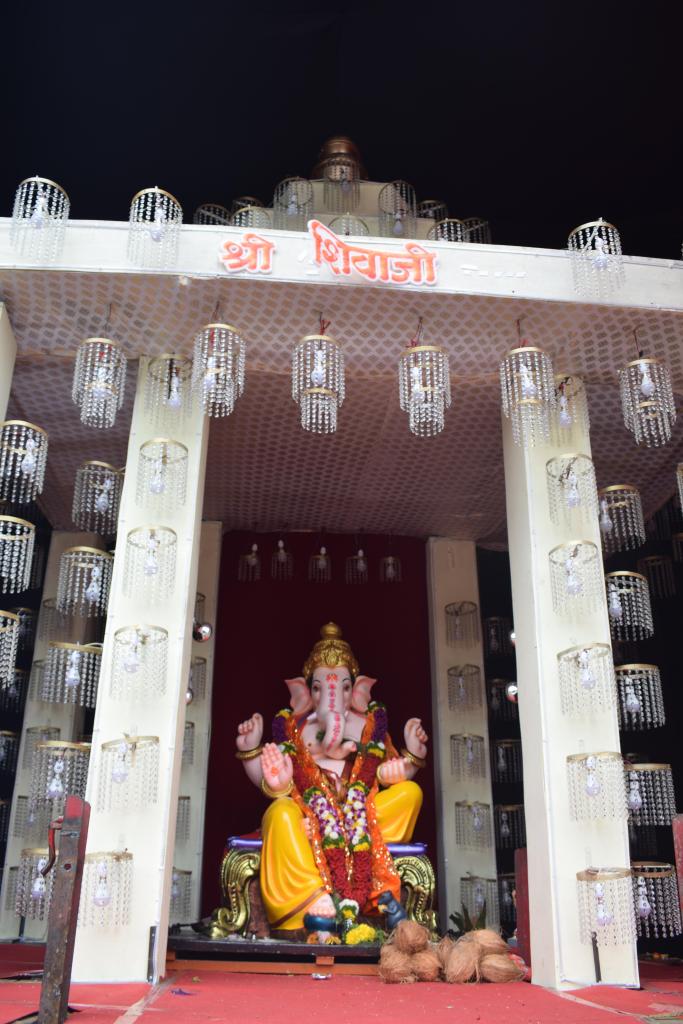
Our trail went from Pune to Ratnagiri, partaking in the festivities at Ganapatipule and ended with puranpoli prasad at the home of Manikar brothers in Pawas near Ratnagiri. More about that later though, as we were walking the historical path in Pune through colourfully decorated streets, thumping our feet to the sound of dhols amid the throes of people.
Dagdusheth Halwai Sarvajanik Ganpati Pandal
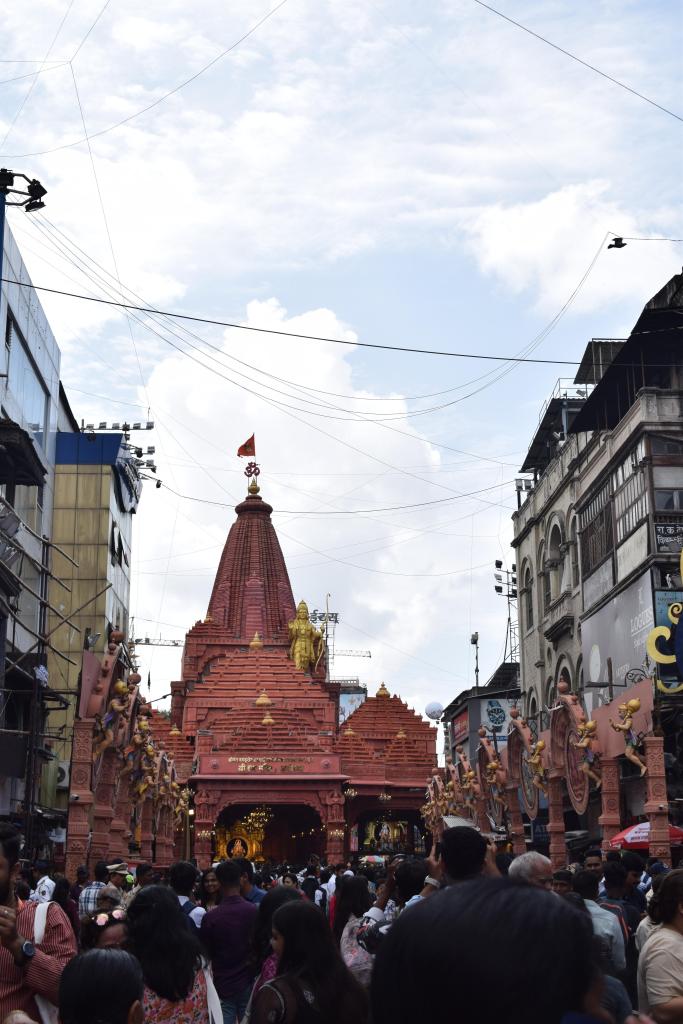
Ganapati Bappa Morya, Mangal Murti Morya
(Welcoming the great Lord Ganesha, who brings in prosperity and happiness)
The chants reverberated in the air as the crowd surged forward to the pandal where the golden statue of Ganesha was placed on an elevated platform, visible from quite a distance. We stood for a moment outside the Dagdusheth Halwai Ganapati Temple, the garbhagriha cast in silver donated by the devotees.
The sweet-maker, wrestler and ardent devotee, Dagdusheth was among the first responders to Tilak’s call in 1893. He had been guided by his guru, Madhavnath Maharaj, to build a Ganapati temple to heal the pain of losing his son in the epidemic that plagued the city. Dadgusheth and his wife Laxmibai had an idol crafted by Balaji Patole, which was installed in the temple on February 19, 1893. In 1896, a new idol was installed.
On the 75th anniversary, in 1968, a new idol made by Karnataka’s famous sculptor Nagesh Appa Shilpi, was installed. Going by the tradition established by the devotee, this idol is placed in the pandal for the 10-day festival. However, for visarjan (immersion in water, signifying the return of the god to his parents Shiv and Parvati in Mount Kailash), a smaller idol is created and this one is taken back to the main temple.
The pandal is famous for showcasing models of different temples across the country every year. This year, it was the soon-to-be opened Ram Mandir in Ayodhya. This magnificent 100-feet red structure was made from fibre by 400 artisans in three months.
Scenes and verses from the Ramayana lined the pathway leading to the main pandal. Replicas of Ram, Hanuman and vanar sena (monkey army) graced the entrance.
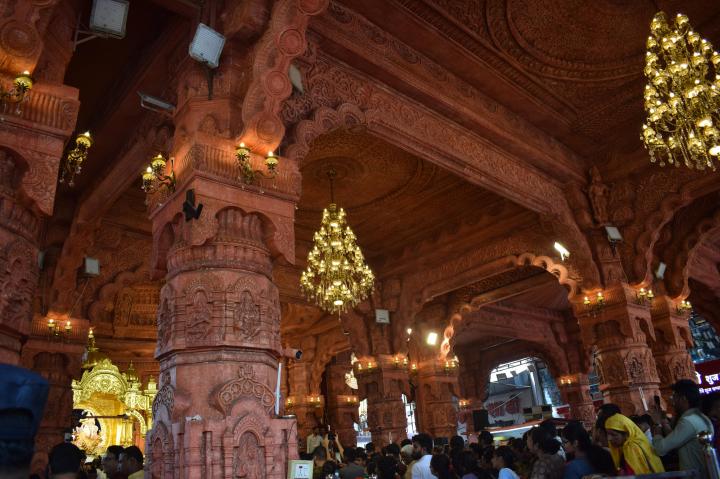
As we drew closer to the pandal, the golden idol became clearer, glass chandeliers spread light in the pandal cramped with devotees.
“Adorned with 125 kg of gold ornaments, Lord Ganesha wears a different bejewelled mukut (crown) daily,” informed Mahesh Shankar Rao Suryavanshi, Co-Vice President, Shreemant Dagdusheth Halwai Sarvajanik Ganpati Trust. The pandal had police security.
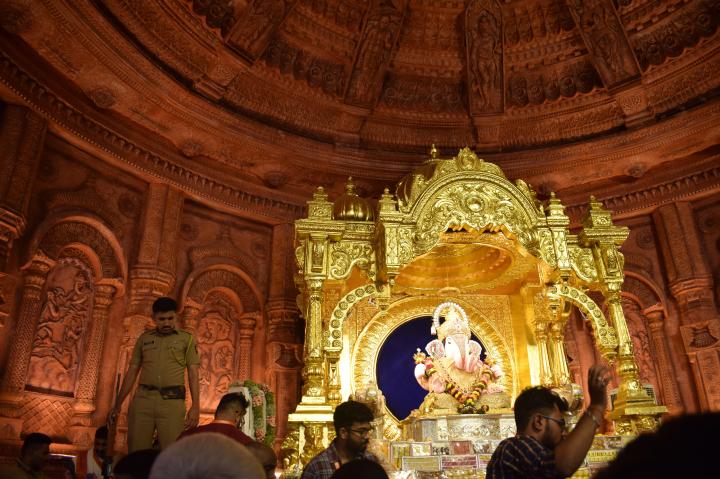
Every year, 15 days prior to the festival, the original idol is given a fresh coat of paint by the Mukhedkar family (Shridhar Ambadas Mukhedkar, his son Rajendra and grandson Anupam). They have been painting the Dagdusheth Ganesha idol for over 50 years.
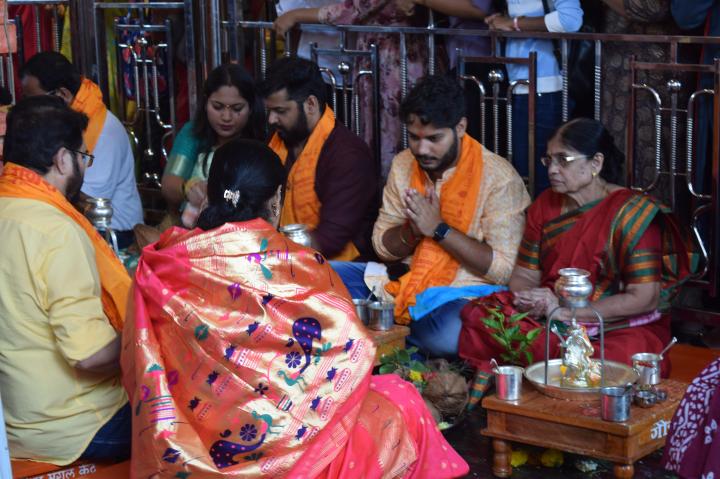
With a designated space for abhishek, families dressed in their festive wear were sitting for their special puja which was offered to a silver idol of Ganesha. The fragrance of incense, flowers and sweets filled the air. The devotees took back tulsi saplings at the end of this puja.
The pandal has been favoured by the rich and the famous. Late singer Lata Mangeshkar had participated in the centenary celebrations. Late Prime Minister Atal Bihari Vajpayee had visited as well. As Maharashtra Deputy Chief Minister Ajit Pawar offered his prayers, we waited patiently for our turn.
Keeping the spirit of its century-old tradition, the trust contributes to the welfare of the people in good measure and has eco-friendly, sustainable practices in place for disposal of the pandal structure and all the other leftover stuff. “We use 25 per cent of the donations for puja and the remaining 75 per cent is used for social initiatives. We send food for 3,000 people daily to Sassoon Hospital, provide education and financial support to deprived children, contribute to old age homes, promote sports,” said Suryavanshi, standing near a building which was once the home of Dagdusheth.
To know all about Dagdusheth, read here.
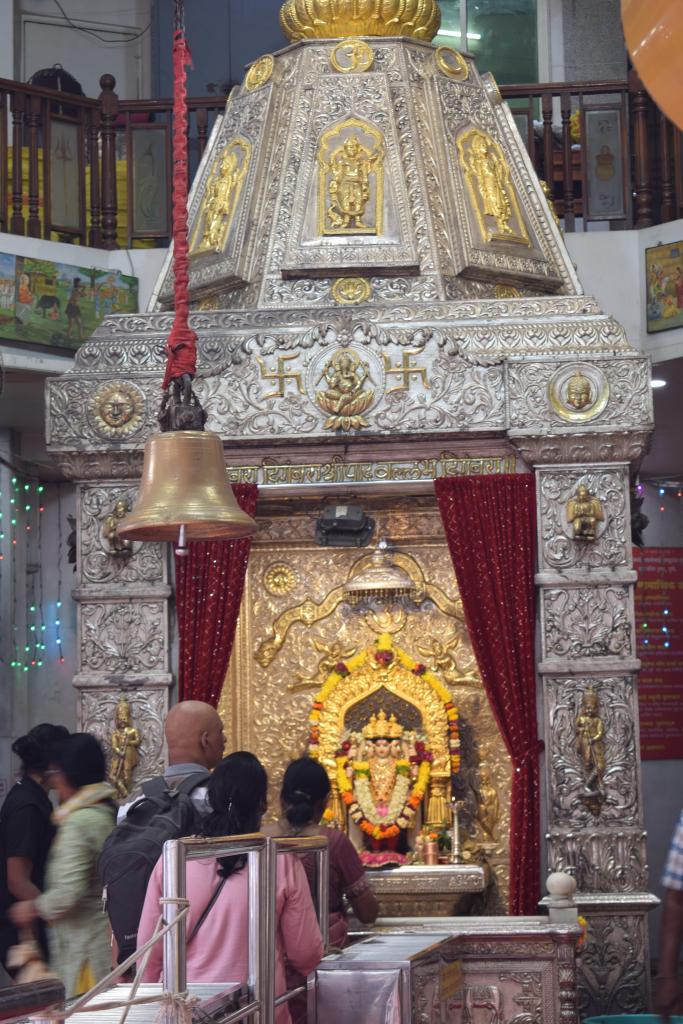
Folding our hands to the deity residing in Shree Datta Temple (built by Dadgusheth’s wife) on the corner, we turned to see flower vendors and more pandals, following the sound of drums to find ourselves in front of the famous Tulshibaug pandal. The grandeur and fervour of Sarvajanik Ganesha Utsav was contagious.
Drive from Pune to Ratnagiri
Along the picturesque Western Ghats, monsoon showers turning the verdant greens into brighter hues, we watched the rain drops splashing against the windowpanes of our bus. The glorious Konkan coastal belt beckoned.

Ganapatipule is an idyllic getaway, located around 60 km from Ratnagiri. Here, Ganesha is the guardian of West Coast, his temple standing right on the shores of the Arabian Sea. During high tide, the waves crash into the temple premises but no one has ever come to harm.
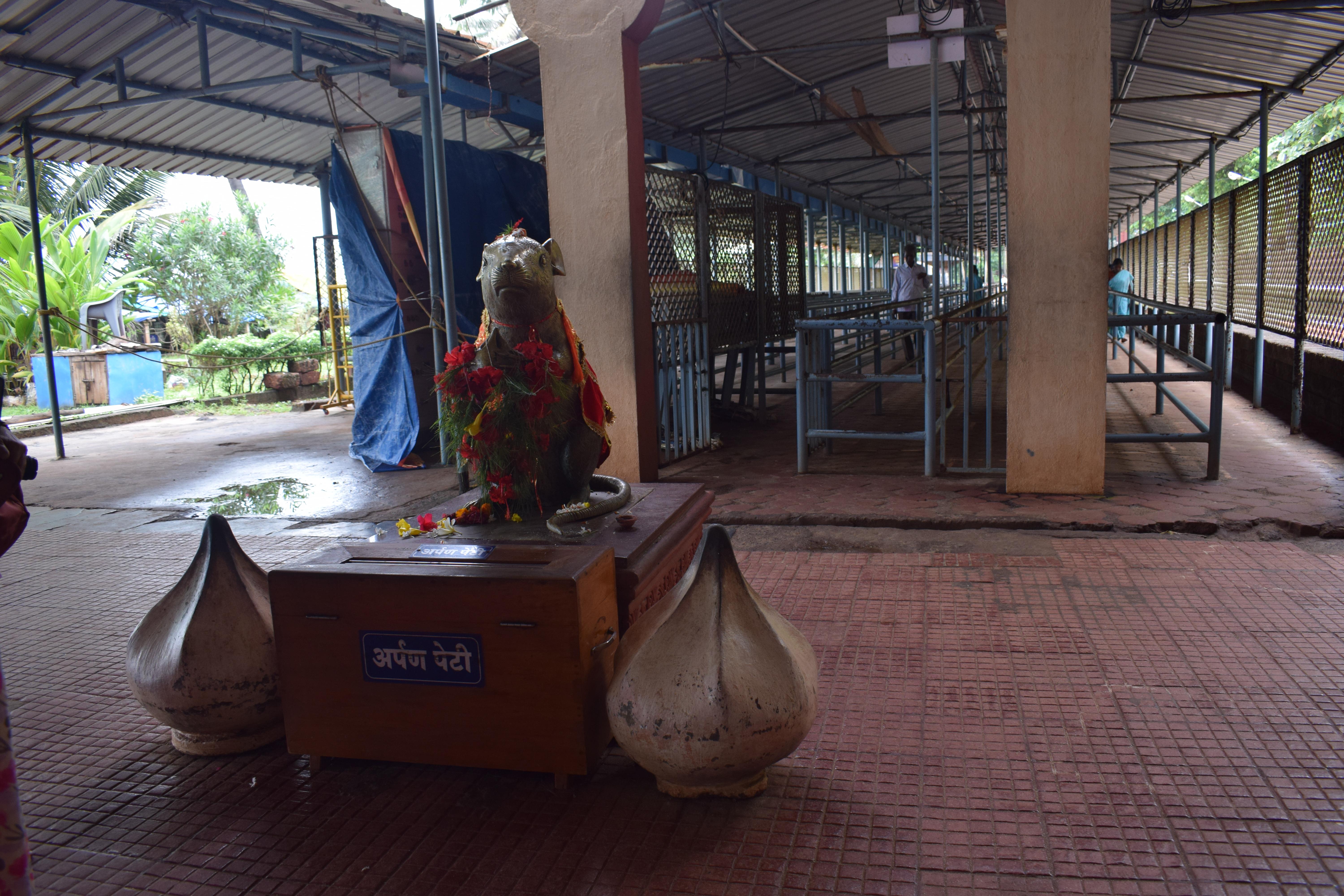
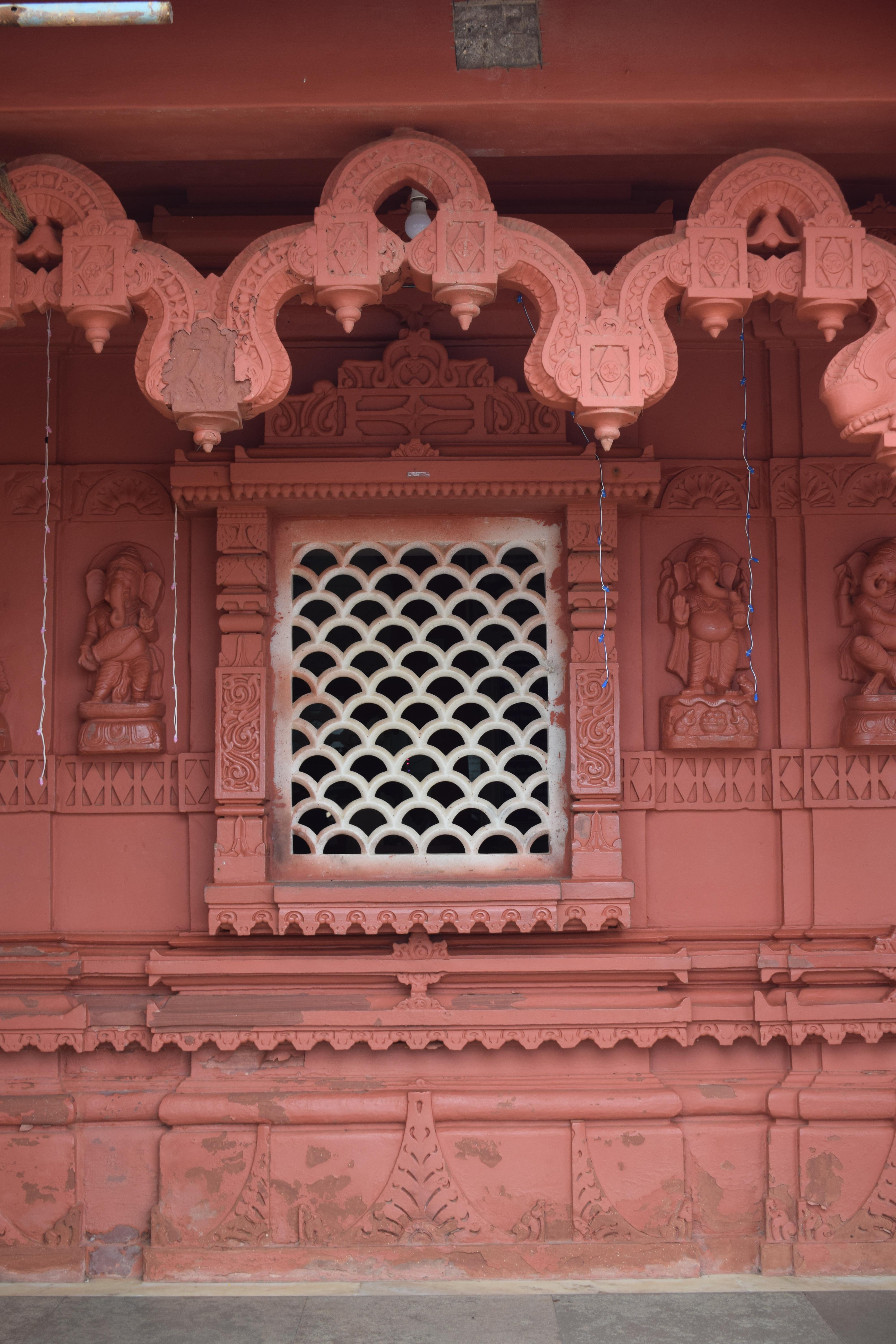
No crowd or long queues here, as the idol doesn’t travel to any pandal. In fact, this is probably the only town in Maharashtra which does not have a visarjan.
Housing a swayambhu (self-originated) idol of the elephant god, it has a panoramic vista with verdant hills in the background and the rushing blue sea in the front.
The origins of this temple go back 400-500 years, according to the chief priest Abhijit Vinayak Ghanvatkar. The idol was discovered by Balambhatt Binde, the village head. The temple is located on the spot where a kewada tree grew once, it was a forest then, and the idol was unearthed there.
To know about the legend of Ganapatipule temple, read here.
Ganapatipule temple is one of the sacred eight Ganesha temples. It was patronised by the ministers from Shivaji’s court. It is a wish-fulfilling temple.
The ninth generation of priests, Ghanvatkar said, “This prayer site is mentioned in the Mudgala Purana and the entire mountain is a representation of Lord Ganesha. The ancient scripture mentions Ganesha as the ‘Paschim Dwar-Devata’ or ‘Paschim Dwarpalak’ (Western Sentinel God).” Therefore, the temple faces the west direction, unlike other temples which face the east. Among the prevalent traditions is the parikrama of the entire temple, and not just the garbhagriha.
In another tradition, the residents of this little town do not have special idols of Ganesha in their homes for Ganesha Chaturthi. They have the privilege of touching the deity’s feet during the 10-day festivities.
Ganesha Chaturthi at home in Ratnagiri
Celebrations at home were an intimate affair, warmer and personal. The festival united families and friends, even strangers.
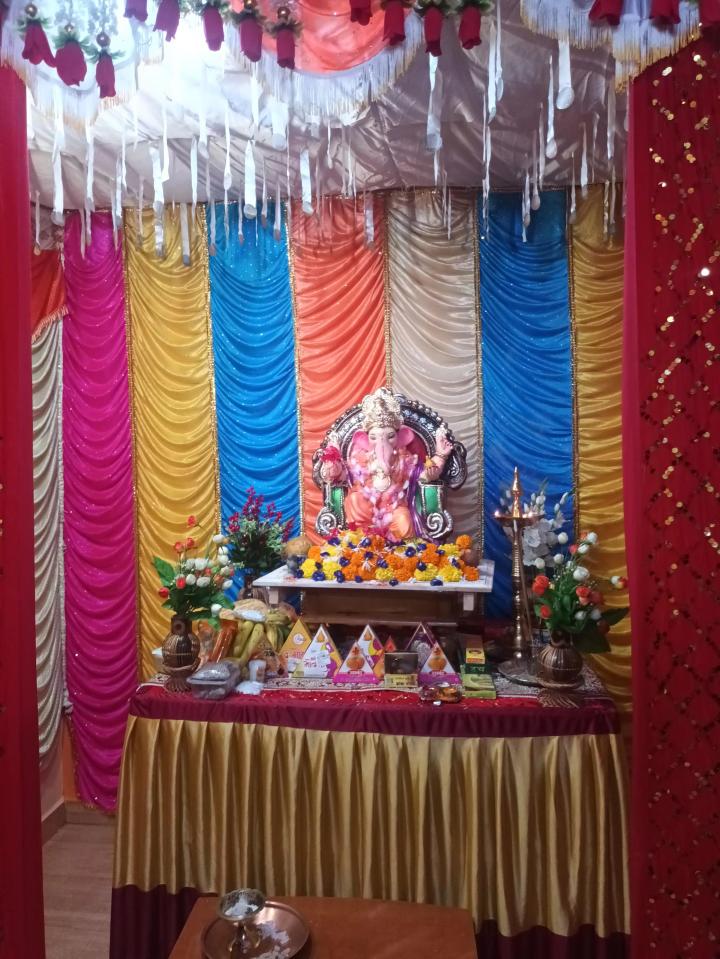
It was a red-carpet welcome by the Mayekar family at their home in village Pawas, near Ratnagiri. The idol, made of terracotta, and beautifully decorated, was procured from a neighbouring idol maker. The god was placed on an elevated platform in a brightly lit and lovingly decorated space. Flowers and sweets made up the offerings.
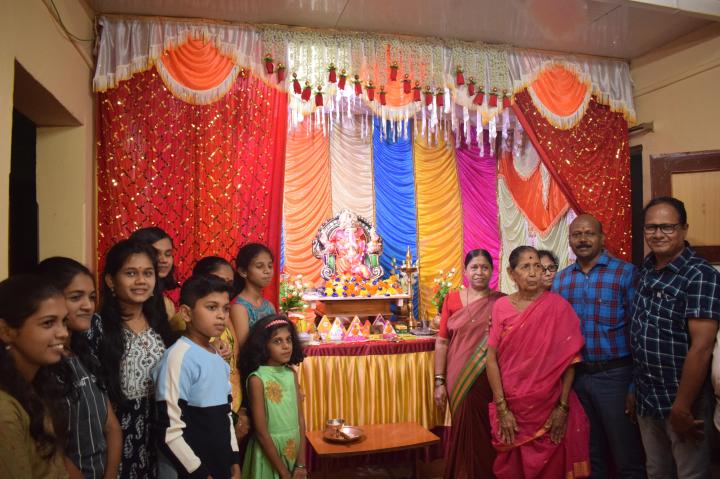
Dressed in their finery, the extended family came together every morning and evening for the aarti. We watched Ravindra Ramchandra Mayekar, man of the house (blue shirt), lead the aarti. His brother, Yashwant Ramchandra Mayekar, had come with his family for the puja.
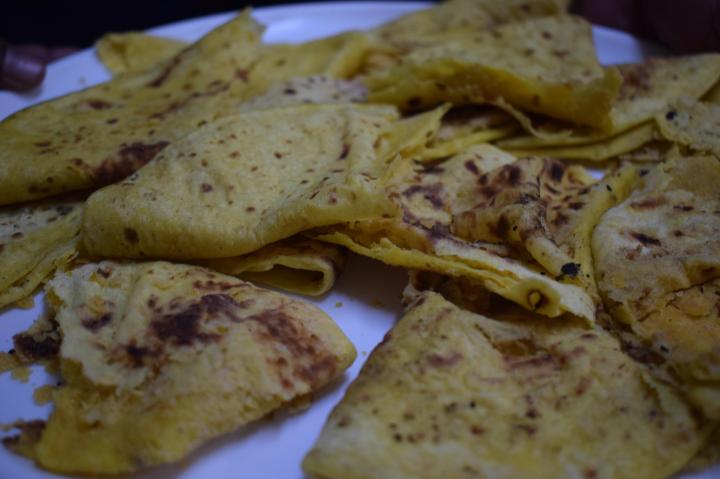
“This 30-minute ritual is led by the man of the house. The women are responsible for decorations and cooking special meals, sometimes for over 50 people at one time,” elucidated the Mayekar brothers. “The idol is installed by a priest on the first day and then the family takes care of the deity.” We were treated to a home-made puranpoli prasad (roti filled with ghee, jaggery and coconut).
The visarjan procession was also a gala affair, where the songs, dance and chants continued till the god went home.
Ganpati Bappa Morya, Pudhchya Varshi Lavkar Ya
(Bidding adieu to their beloved god, the people request him to come again the next year.)
Though we missed this, I got an idea of the visarjan procession, seeing one during the bus ride in Pune, and later Instagram posts. In Pune, the idols are immersed in small ponds and then designated NGOs collect them for proper disposal.
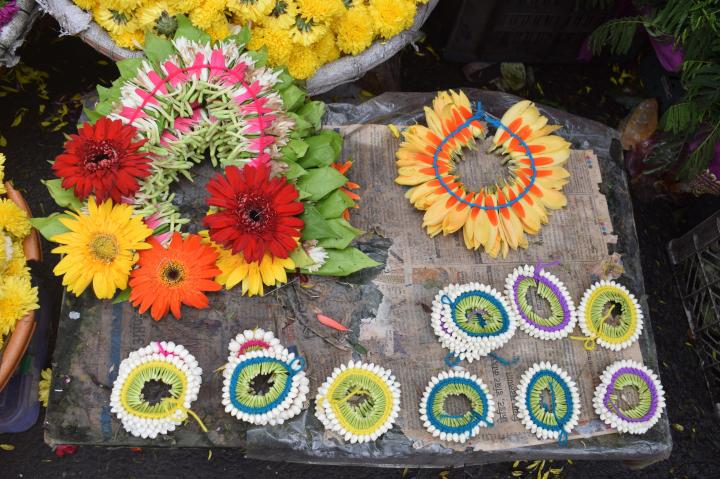
The trail ended with us taking the flight back to Delhi from Goa, carrying a lot of local flavours in our bags and memories in our cameras.
Quick Facts about Pune
How to reach Pune: The metropolis is well connected by road and rail to all major cities in India. It also has an international airport.
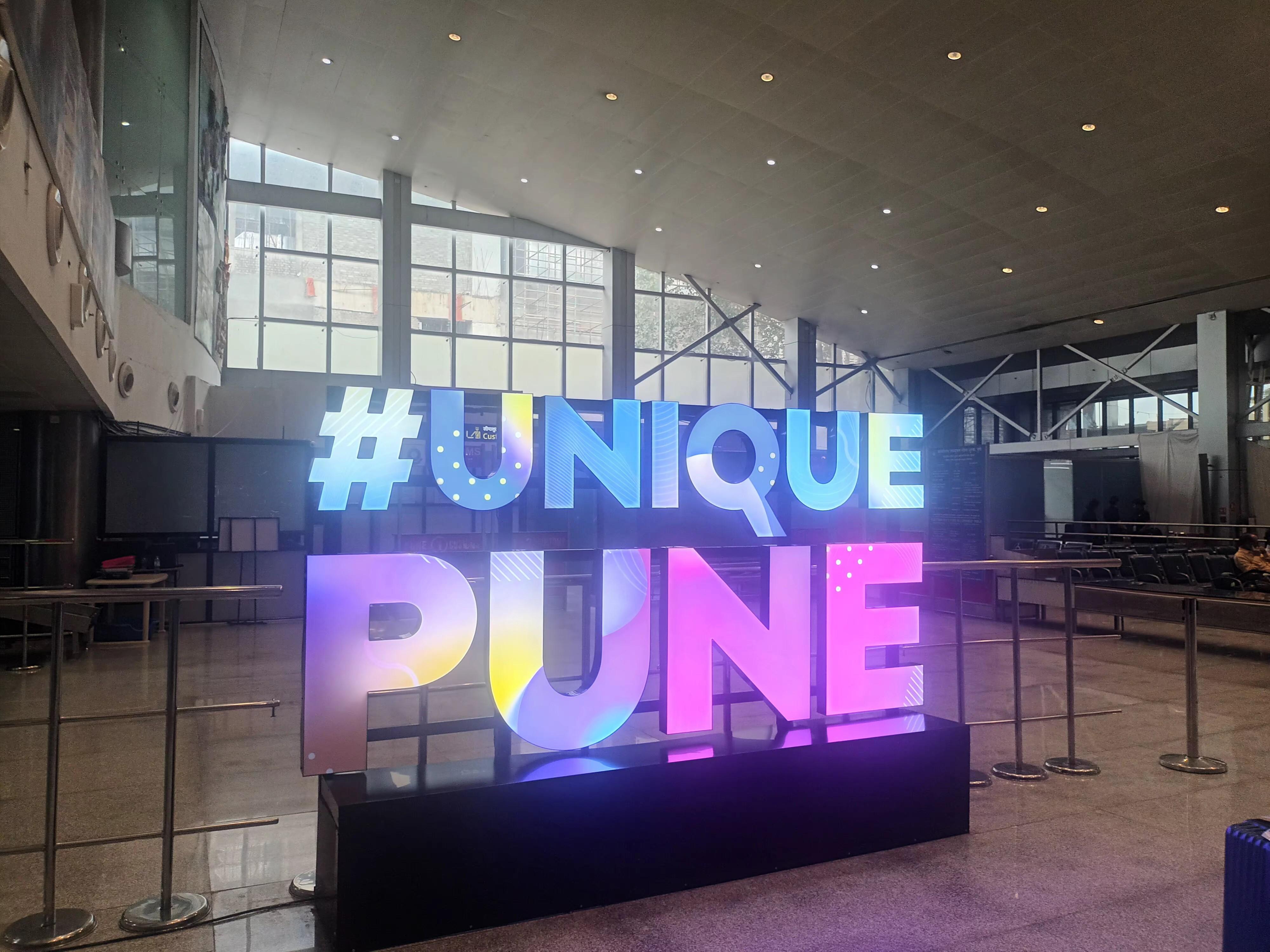
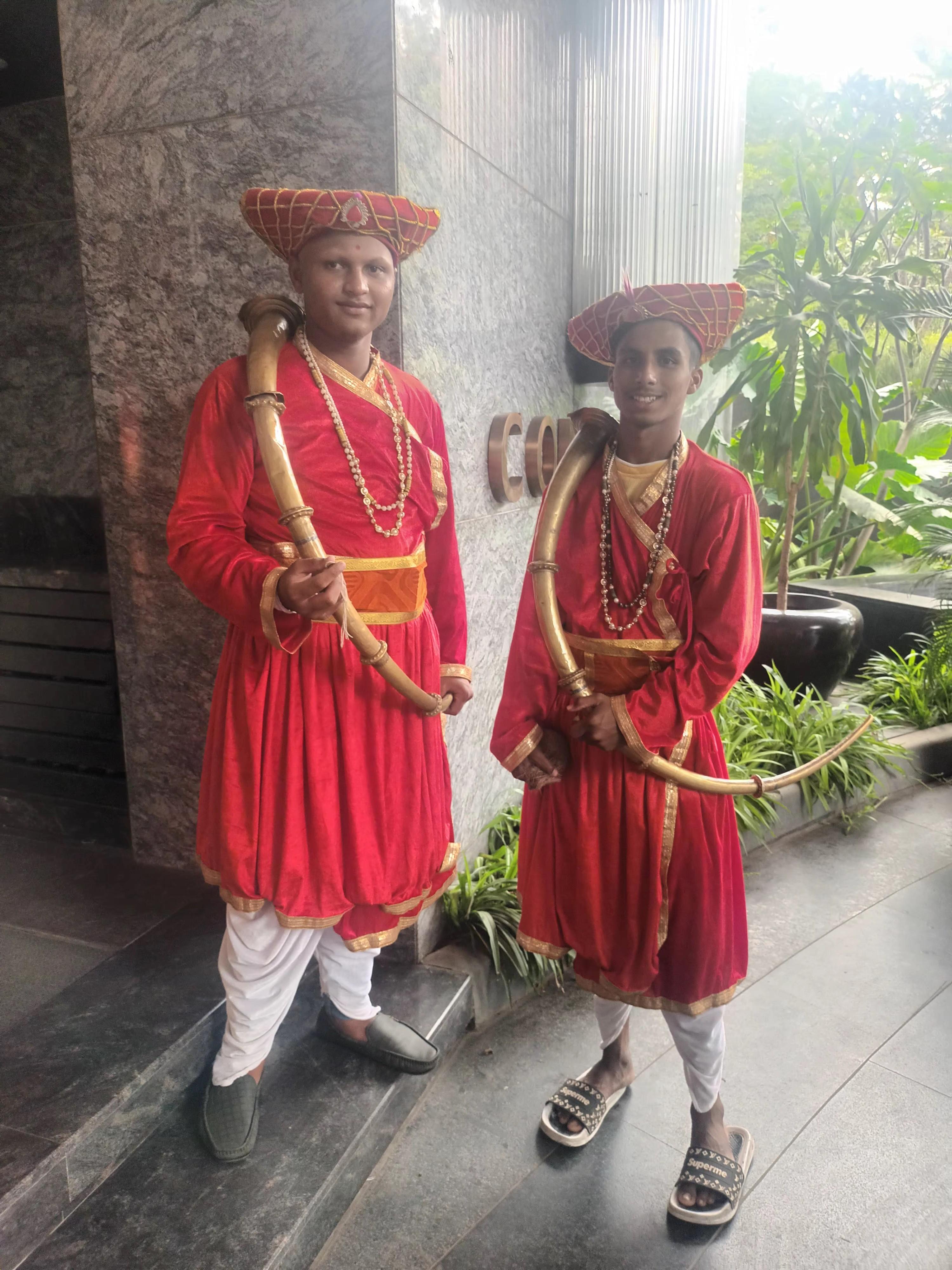
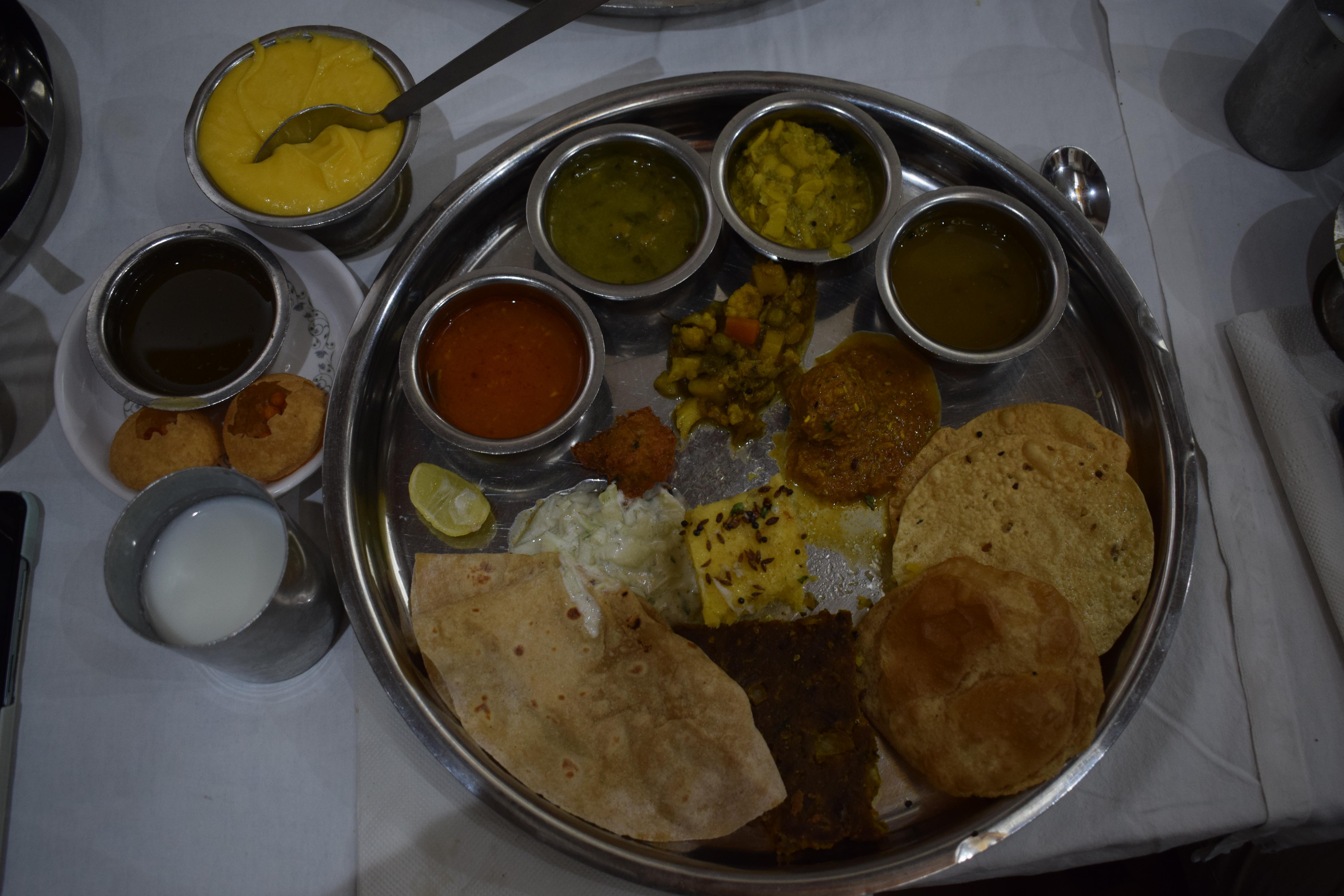
Where to stay in Pune: Conrad Pune with its luxurious rooms, lavish buffets, spa and health club.
Where to eat in Pune: Sticking to the puja fervour, for lunch, we relished the enormous vegetarian Maharashtrian thali at Hotel Shreya’s on Apte Road.
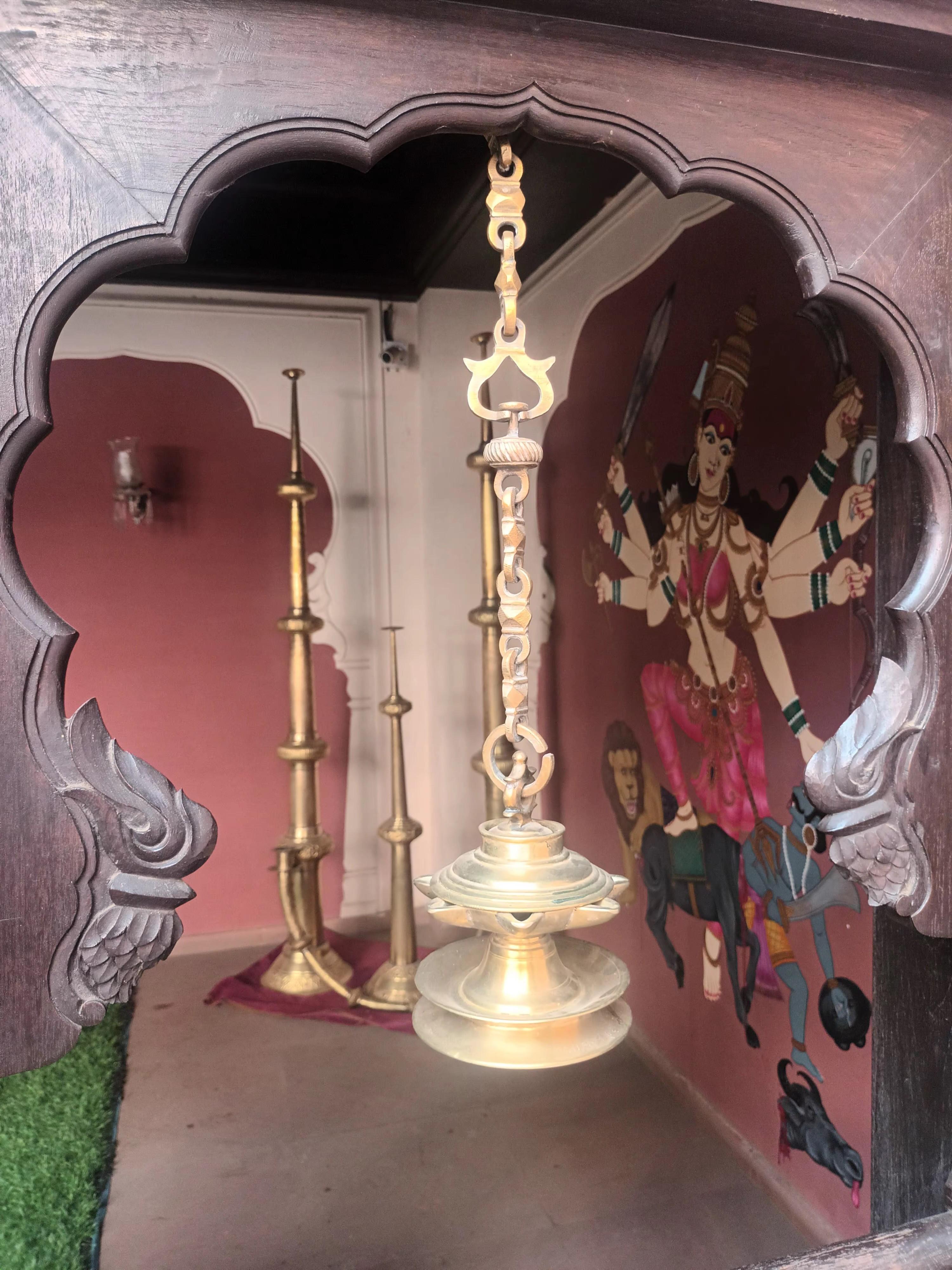
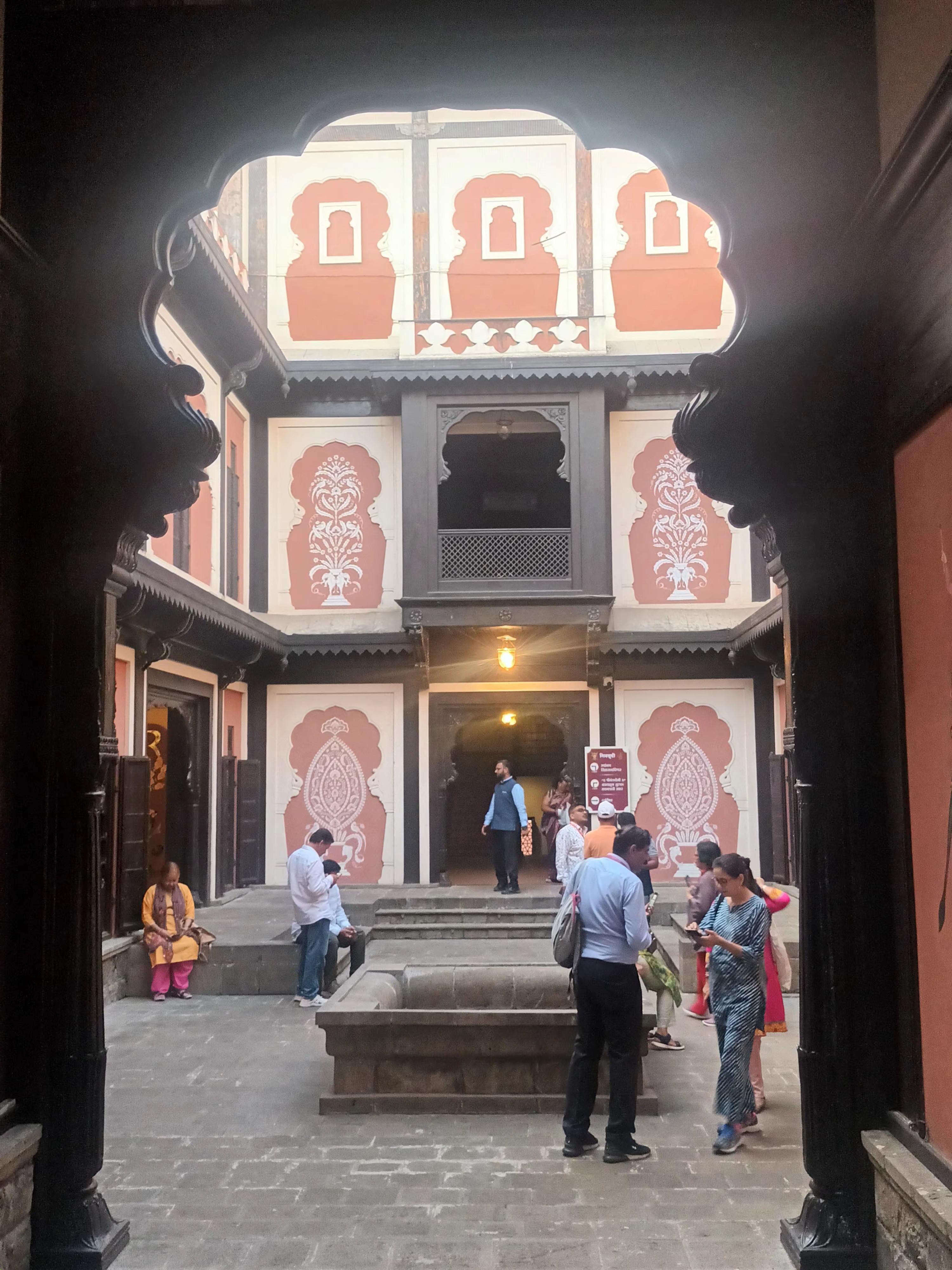
More places to see in Pune: Located around 11km from the city, Shivsrushti is a 20-acre, Rs 500-crore theme park under development. It gives an in-depth multi-media account of the Maratha ruler Chhatrapati Shivaji Maharaja’s life.
Historical places are Lal Mahal, Aga Khan Palace, Raja Dinkar Kelkar Museum, Sinhagad Fort, Parvati Hill Temple, Pataleshwar Cave Temple, Kesari Wada Museum. For more information, visit Maharashtra Tourism.
You can even go for a day trip to Karla Caves complex, near Lonavla.
How to travel in Pune: The public transport comprises cabs, autorickshaws, buses and metro. You need good bargaining power when travelling by autorickshaw.
This trip was on invitation by Department of Tourism, Government of Maharashtra, for the International Ganesha Festival 2023. The views expressed are my own.


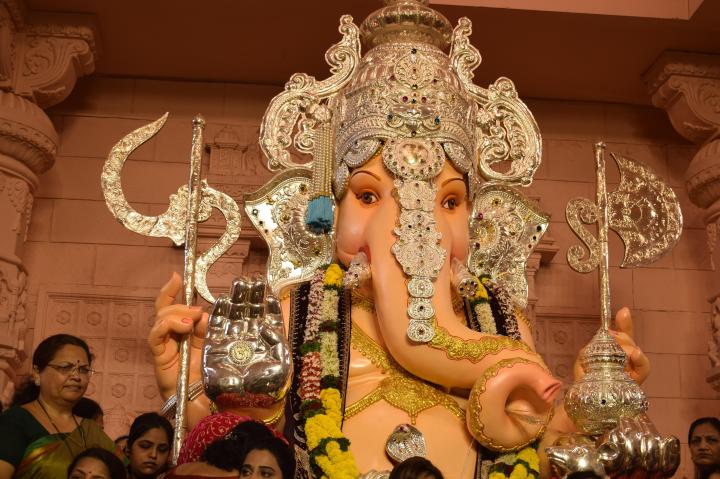
I loved reading your vivid discription of the Ganesha Chaturthi Festivities from Pune to Ratnagiri. To me, the Hindu festivities are brightly colorful. And I love reading the stories about the Hindu gods – although I sometimes find it difficult to tell the gods apart.
LikeLiked by 1 person
Ganesha is distinct with his elephant head. You can’t miss him 😊
LikeLike
What a fascinating and colorful festival! I have never been to India and know nothing about your traditions or festivities so it was interesting to read about it. The architecture of the temple is remarkable and Pune looks like a picturesque region to visit. I really learned something new from your post.
LikeLiked by 1 person
India has many .mega festivals. The celebrations have grown over the centuries.
LikeLike
The Ganesha statue is so much fun to start the Ganesha Chaturthi Festival. And fascinating to read that there is a different crown on the statue each day. Interesting to read that this festival was established to unite people against the British rule. And to know that there are also quieter celebrations at home. A great mix of history and celebration.
LikeLiked by 1 person
Well, despite being an Indian, I am not a religious person, so even for me this was a whole new experience.
LikeLike
The Ganesha statue is so much fun to start the Ganesha Chaturthi Festival. And fascinating to read that there is a different crown on the statue each day. Interesting to read that this festival was established to unite people against the British rule. And to know that there are also quieter celebrations at home. A great mix of history and celebration. Thanks for sharing!
LikeLiked by 1 person
Ah! I just got back from India, and you are so right about their celebrations. The excitement is contagious, and they have so much energy. Tilak was SO SMART in capitalizing on this feeling to encourage folks to break away from British rule. I haven’t heard of him, but he obviously was so instrumental in helping to make India what it is today. Thanks for highlighting him as I’m really interested in the British/India connection.
LikeLiked by 1 person
I would be very interested to attend such a festival and see all the colours and the celebrations, learning about their significance. I have only been to a similar festival in Sri Lanka, and I remember the wonderful smell of the incense sticks every where and the parades on the streets. I have learned about Ganesha during my three trips to India. It’s interesting how Tilak united the people against the British basing it on a story of Ganesha killing a demon.
LikeLiked by 1 person
The festivities in India are celebrated with so much colour and grandness that is so interesting to watch (and read about). Loved this descriptive narrative of the preparations of Lord Ganesha ahead of the celebrations and I can almost smell the fragrance of the incense too
LikeLike
Wow what a fascinating and colourful festival!! Bet it was fantastic to experience in person, also what a history-filled area to explore, so much to see and do. I really hope to visit India one day and experience on of these festivals myself
Laura x
LikeLiked by 1 person
This is an interesting! This is the first time I have heard about the Ganesha Chaturthi Festival. The festivities in India are so grand and colorful. It would be nice to visit and join the celebration in the future. Appreciate you sharing how you celebrate this at home too. I learned something new today.
LikeLiked by 1 person